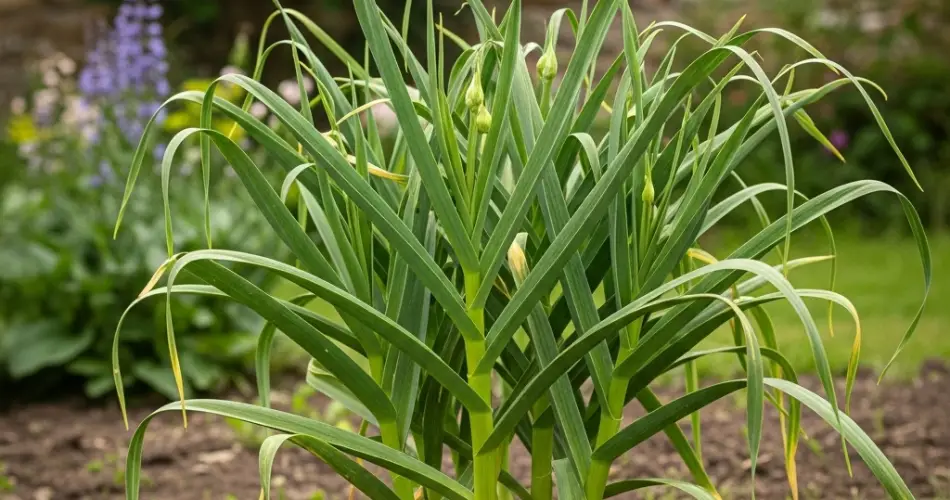Garlic is not only a kitchen essential but also one of the easiest crops to grow at home, even if you have minimal space, time, or gardening experience. With just a few cloves and a little patience, you can cultivate your own garlic right in your backyard, balcony, or even a container by the window. Here’s how to grow garlic with almost no effort and enjoy a fresh, flavorful harvest in a few months.
Why Grow Garlic at Home?
Homegrown garlic has a much richer flavor than most store-bought varieties. Additionally, it’s free from chemicals and pesticides, and you can harvest not only the bulbs but also the tender green shoots, known as garlic scapes, which are excellent in salads and stir-fries.
Garlic also has natural pest-repelling properties and fits well in companion planting with vegetables like tomatoes, carrots, and lettuce.
What You Need
-
A few healthy garlic cloves (not peeled)
-
A pot or garden bed with good drainage
-
Loose, fertile soil
-
Sunlight (at least 6 hours a day)
-
Water
Choosing the Right Garlic
Start with organic garlic if possible, as non-organic supermarket garlic is often treated with growth inhibitors to prevent sprouting. Choose plump, firm cloves from a head of garlic. Avoid using shriveled, moldy, or soft cloves.
There are two main types of garlic:
-
Hardneck: More cold-hardy and produces scapes.
-
Softneck: Better for warmer climates and has a longer shelf life.
Both types grow well at home, but softneck is often more forgiving for beginners.
Step-by-Step Guide
1. Prepare the Soil
Garlic thrives in loose, well-drained soil rich in organic matter. If planting in a pot, make sure it has adequate drainage holes. Mix in compost or aged manure to improve soil fertility.
Ideal soil pH is between 6.0 and 7.0. Avoid overly compact or soggy soil, which can rot the cloves before they sprout.
2. Separate and Plant the Cloves
Break the garlic bulb into individual cloves without removing the papery skin. Each clove will grow into a full bulb.
Plant each clove pointy side up, about 2 inches deep and 4–6 inches apart. In containers, keep spacing but use a deep enough pot (at least 8 inches deep) to support root development.
3. Provide Sunlight and Water
Place the pot or garden bed where it will receive at least 6 hours of sunlight daily. Water the soil moderately after planting, then keep it lightly moist—not soaked. Garlic doesn’t like standing water.
In cooler regions, plant garlic in the fall for a summer harvest. In warmer climates, it can be planted in late winter or early spring.
4. Minimal Maintenance
Garlic requires very little care once it starts growing. Mulching with straw or dry leaves helps retain moisture, suppress weeds, and regulate temperature.
Fertilize lightly with organic fertilizer or compost tea every few weeks during active growth. Remove any weeds that compete for nutrients.
If you see flower stalks (scapes) forming, pinch them off to allow the plant to focus energy on bulb development.
Harvesting Your Garlic
Garlic takes 6–9 months to mature, depending on when you plant it. Harvest time is usually signaled by the yellowing and drying of the lower leaves. Don’t wait until all the leaves die—this could lead to the bulbs splitting underground.
Use a garden fork or trowel to gently lift the bulbs from the soil. Do not pull them by the stems as it may damage the bulbs.
Curing and Storing
After harvesting, let the garlic cure in a dry, shaded, and well-ventilated area for 2–3 weeks. Hang the bulbs or spread them on a rack, leaving their stalks attached.
Once dried, trim the roots and stalks. Store the bulbs in a cool, dry place in mesh bags or baskets. Properly cured garlic can last up to 6 months.
Growing Garlic from Scraps
If you’ve used up your garlic and only have a clove or two left, you can still regrow it. Simply place the cloves in water with the base submerged, and wait for roots and green shoots to appear. Once they sprout, transfer them to soil and follow the same growing instructions.
Final Tips
-
Avoid overwatering to prevent rot.
-
Rotate your garlic planting area each year to reduce disease risk.
-
Garlic can be grown alongside herbs and leafy greens for a more productive garden.
Growing garlic at home requires minimal effort and brings a high reward. Whether in a pot on your kitchen windowsill or a small garden bed, garlic is a low-maintenance crop that delivers big flavor and health benefits. Give it a try, and enjoy the satisfaction of harvesting your own fresh, homegrown garlic.



